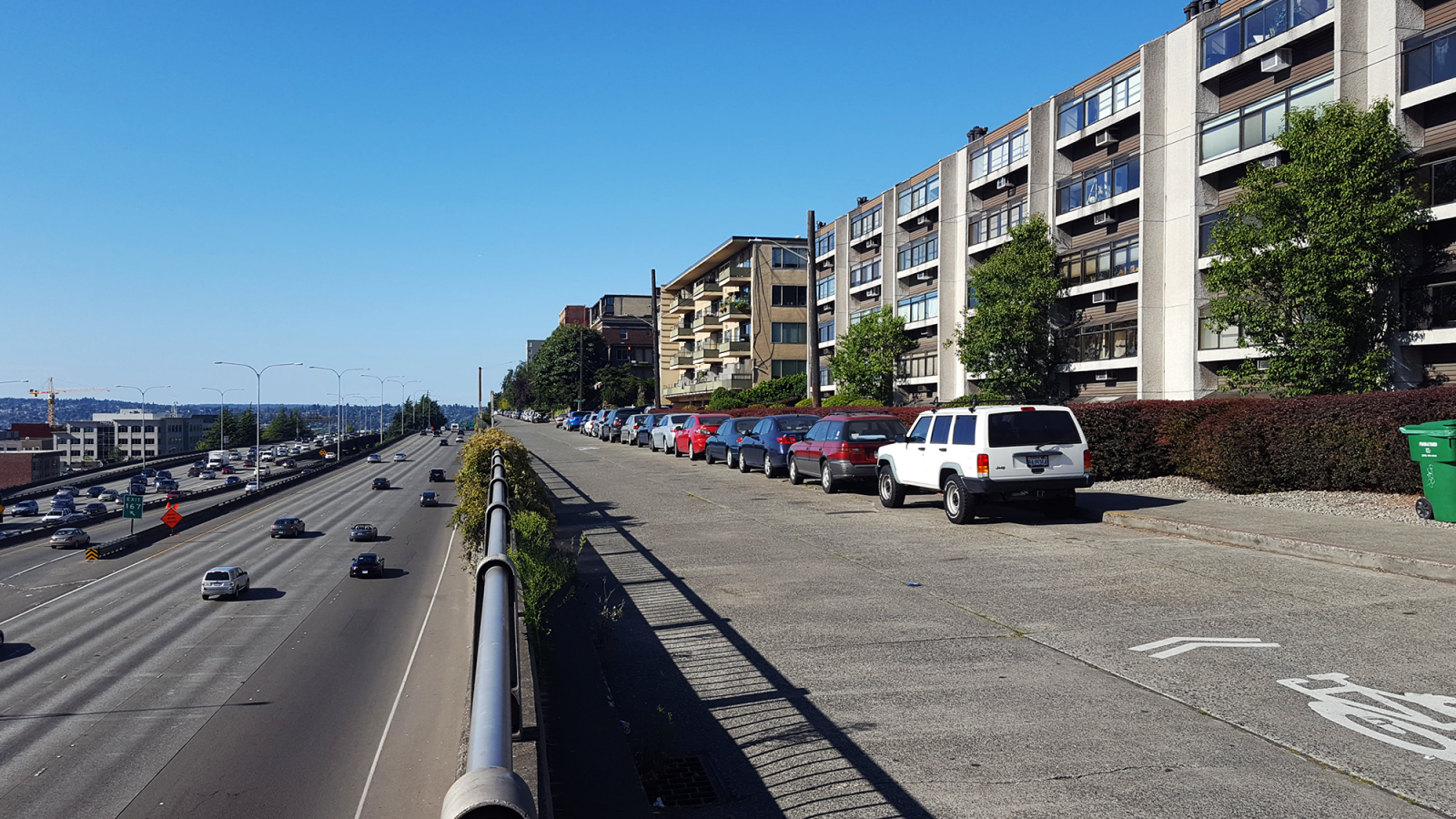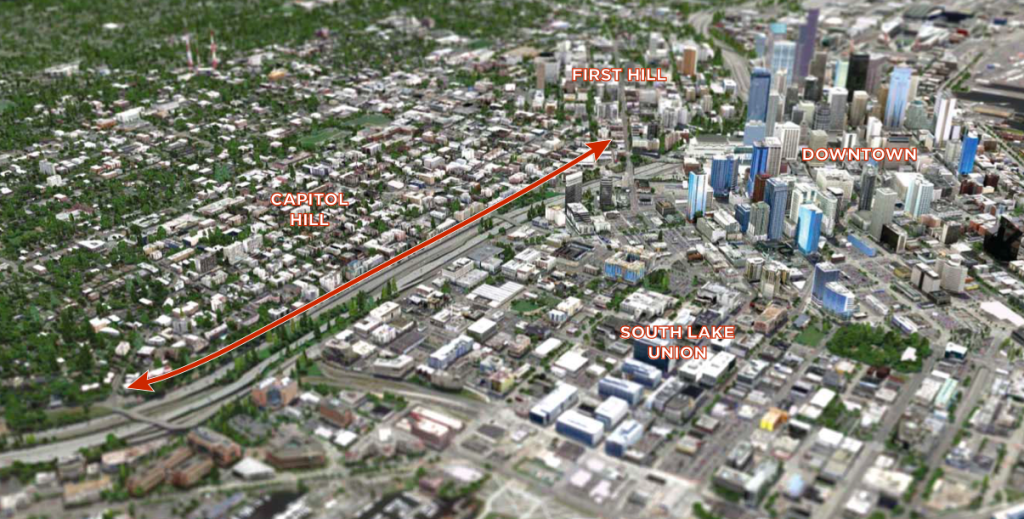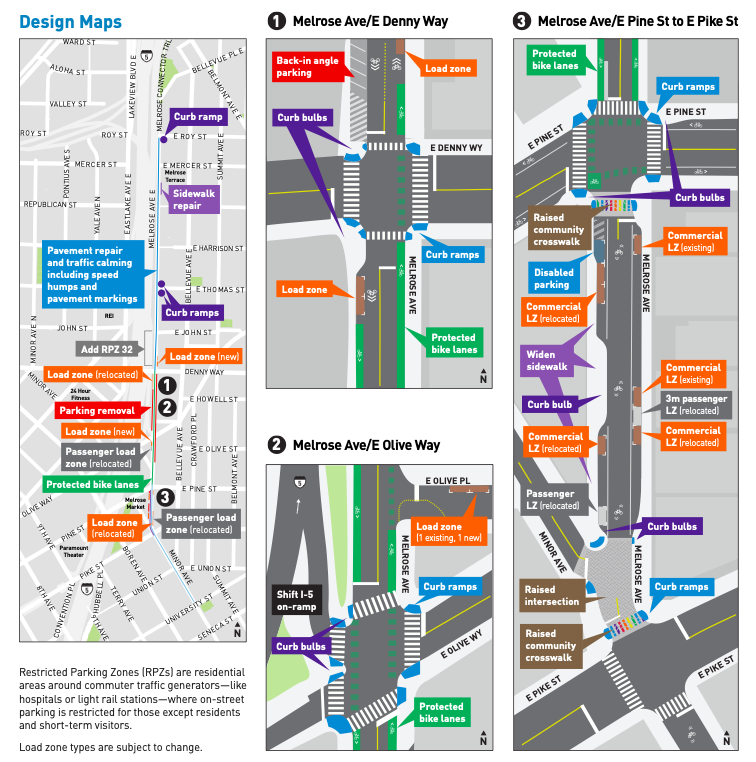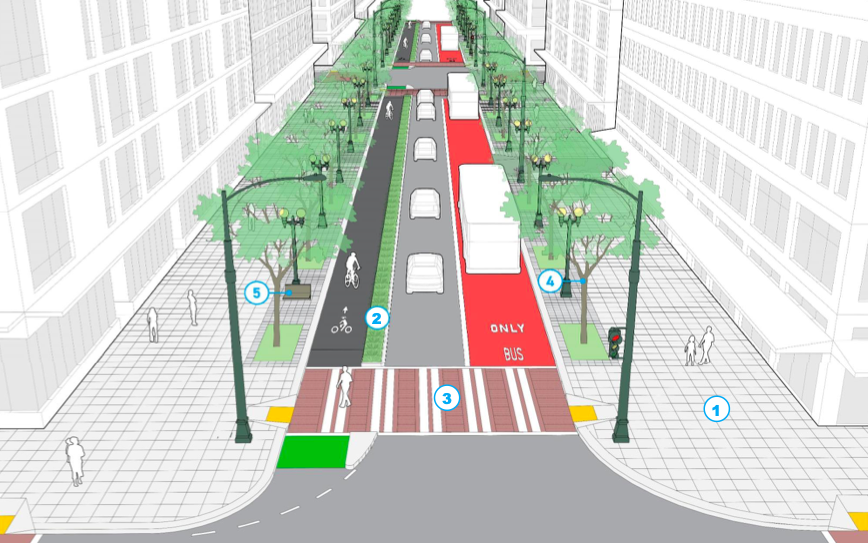
Initiated by urban designer Michael Kent back in 2010, the Melrose Promenade is officially breaking ground this week according to an update from the Seattle Department of Transportation (SDOT). When it is completed, the public can expect Melrose Avenue in Capitol Hill to become a safer, more vibrant space for people to walk and bike.
Phase 1 of the Melrose Promenade will include wider sidewalks, accessible curb ramps, curb bulbs shortening crossing distances, raised crosswalks, a reconfigured on-ramp to I-5 aimed at reducing collisions, and protected bike lanes between Denny Way and Pine Street. These improvements are also hoped to establish the foundation for eventually fulfilling the community vision of transforming the Melrose Promenade into a “front porch” for Capitol Hill.

The project groundbreaking comes a decade after the City of Seattle awarded $20,000 in 2012 to Melrose Promenade Advisory Committee, which allowed the group to engage in community visioning process led by design consultants that resulted a concept plan (PDF). The project was given a further boost in 2016 when the Puget Sound Regional Council awarded it $3 million in federal transportation grant funding, and it also received funding from the Move Seattle transportation levy. SDOT estimates it will cost $4.3 million in all to build.
However, delays related to the Covid pandemic, supply chain challenges, and most recently the regional concrete workers’ strike, put the brakes on the Melrose Promenade’s progress. While limited project activity began this past March, significant construction activity is finally expected to ramp up in the corridor starting this week. According to SDOT, the first improvements to be undertaken will be the construction of new accessible curb ramps at E Roy Street and sidewalk and street repair on Melrose Avenue between E Roy Street and E Republican Street.
Candace Goodrich, who is SDOT communication lead for the Melrose Promenade, said construction will work its way south to Denny Way over the following months. “We anticipate that we will be at E Pine and E Pike Street block in early September,” Goodrich said, noting that while the entire project is estimated for completion sometime in fall of 2022, the construction schedule “may be subject to change based on things like weather, material, and crew availability.”

During the work period, residents have been warned to expect noise, dust, and vibrations mostly between 7am and 5pm, temporary sidewalk, intersection, lane closures, detours and parking restrictions. SDOT has stated that pedestrian access to homes and businesses will be maintained at all times throughout the project; however, people who live, work, and travel through the corridor are recommended to sign up for email updates to keep on top of closures and project developments.
A detailed overview of the construction work that will be completed and its impacts on the surrounding neighborhood is available in a Melrose Promenade Overview Presentation led by Goodrich for SDOT earlier this June.
While the construction work will certainly be disruptive in the short term, long term gains associated with the project will be considerable. With its close proximity to I-5, vehicles have a tendency to speed on Melrose Avenue and through its intersections, and years of use has led to extensive wear and tear on pavement and sidewalks. Because Melrose Avenue offers a flat route for crossing north to south on the western end of Capitol Hill, it has remained popular with people walking and biking despite these poor conditions. The result has been a pattern of collisions causing serious injuries to walking and biking on the street.
“Between 2013 and 2018, there were 141 reported collisions, and all but one of those had serious injuries involving someone walking or biking,” Goodrich said during the presentation.
In addition to improving safety conditions, the full vision for the Melrose Promenade is for it to become a vibrant community space that takes advantage of the street’s views and the proximity to Downtown. Ryan Packer wrote a thorough assessment of the planned improvements for The Urbanist back in January 2020 before the Covid pandemic put the project to a grinding halt. Packer noted the raised intersection at Minor Avenue will likely be the largest such facility in Seattle, improving safety at a busy intersection outside the Starbucks Reserve Roastery.
Looking ahead, it’s clear that fully realizing the Melrose Promenade’s potential will need to include safer and more comfortable connections for people walking and biking between Capitol Hill and Downtown. Plans for the Pike Pine Streetscape and Bicycle Improvements reached 90% design in February of 2022, and construction of of these improvements is expected to begin this fall.

While the exact project improvements will vary block by block, when completed, people walking and biking between Capitol Hill and Downtown on Pike and Pine should expect traffic calming, additional space, safer intersections, and more greenery throughout the corridor.
Natalie Bicknell Argerious (she/her) is a reporter and podcast host at The Urbanist. She previously served as managing editor. A passionate urban explorer since childhood, she loves learning how to make cities more inclusive, vibrant, and environmentally resilient. You can often find her wandering around Seattle's Central District and Capitol Hill with her dogs and cat. Email her at natalie [at] theurbanist [dot] org.


